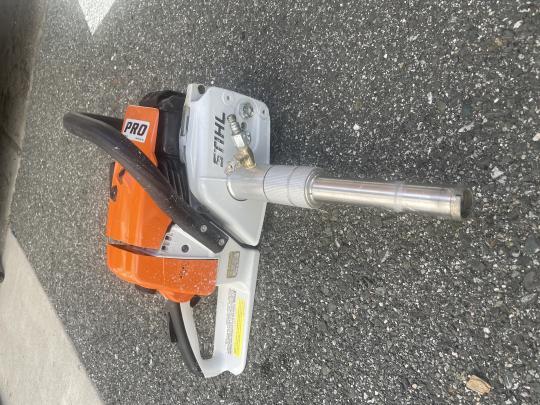Rock Drill
Pomeroy Model D261-C Rock Drill
The department has a rock drill that lives in the rock cutting room, Darwin 21. It is stored in a green canvas bag (see photo). You will need the pressurized water reservoir with attachment hose, a sharpie to mark an initial strike line on the rock where the hole is to be drilled, a screwdriver to use to break off the core once the hole is drilled, and 40:1 gas:oil mixture to run the drill.


The Pomeroy Model D261-C gasoline powered drill is designed for paleomagnetic, geochemical and other sampling. This drill is lightweight, reliable and features a unique bit fastening system that holds bare-shank bits (without collets) straight and true without the use of tools. The D261-C utilizes a powerful 50 cc motor and weighs just 10 lbs and features omni-directional fuel pick-up for running at any angle. The front-end drilling adapter features heavy duty sealed bearings and the exclusive easy operating bit fastener. The fastener will accommodate bits with a tube diameter from 1.080″ to 1.125″. The adapter is anodized high-tensile aluminum alloy.
A quick- release hose fitting and needle valve are mounted on the bearing case for rapid attachment and control of the water-cooling line. The water comes from a Model M-12 3-gallon manually pressurized water pump can. It includes an 8 ft. hose and one 10 ft. extension fitted with quick-release connectors.
The Pomeroy Orienting Fixture is used to measure the azimuth and dip of in-place cores drilled with 1 1/8″ core drill bits (1″ core ID). It features an anodized aluminum tube and orienting platform which is adjustable using a tripod-style clamping handle. A small cylindrical wedge is included, which can be fitted onto the tube and used to lock the orienter in place over the in-place core while measurements are being made. The platform is machined to accommodate a clear plastic sun compass or, with sun compass removed, an aluminum-case Brunton pocket transit for magnetic azimuth measurements. Once the platform is leveled using a Brunton compass, sun and/or magnetic azimuths can be measured, and core dip angle can be measured using the fixture’s vertically mounted protractor.

